Milwaukee Quietly Adds Buffered Bike Lanes
The changes on south 2nd are welcome, but when will the city start creating protected bike lanes?
With no fanfare, parties or media conference, the City of Milwaukee Department of Public Works has quietly added buffered bike lanes to the resurfacing project on S 2nd Street between Scott and National. Given Walkers Point’s status as the “It Neighborhood” of the moment and the flood of great new bars and restaurants opening along S. 2nd, perhaps city officials did not feel buffered bike lanes warranted any hoopla.
So I say three cheers to the city for putting in buffered lanes instead of just re-striping the 15 ft wide motor vehicle lane that used to be there alongside a regular 5 ft bike lane. South 2nd Street used to have four motor vehicle travel lanes and no bike lanes until it was put on a road diet and cut down to two motor vehicle lanes and two bike lanes. When it was reconstructed north of National Avenue, the city widened the walk area, added 5 ft wide bike lanes next to a typical 11 ft wide motor vehicle lane to fill in the space where the old motor vehicle lane used to be. The regular 8 ft parking lanes were retained.
The road south of National was not reconstructed at that time, so without the ability to move curbs, that left a roadway cross section with a 15 ft wide motor vehicle lane next to the regular 5 ft bike lane and the 8 ft parking lane. Wide motor vehicle travel lanes typically induce speeding, and I heard plenty of complaints about that from business owners when I worked for the city. This resurfacing project did not allow city officials to move curbs either, but they did put in high-performance pavement markings and the buffer zone. The new, narrower motor vehicle lanes and the buffered bike lane seemed to slow traffic, from what I observed while taking photographs for this story, but the real test will be in speed studies.
If they had done this, the protected lanes would have to transition back to the normal position outside the parking lane in order to align with the bike lanes north of National Ave. and south of Scott St. I asked Kristin Bennett, the City Bicycle and Pedestrian Coordinator that question and this was here response:
The City very seriously considered protected bike lanes on S. 2nd Street but opted for buffered bike lanes because of the specialized maintenance requirements of protected bike lanes and some potential impacts on parallel parking near the transitions/intersections.
The modified street striping went in about three weeks ago following the City’s High Impact Paving Program project on S. 2nd Street between National and Scott. The modification to the pavement markings used existing roadway space to provide a more generous parking lane (which will help during winter months when snow/ice builds along the curb line), the buffered bike lane versus just a standard bike lane, and reduced width travel lanes that are now a typical 11’ travel lane width.
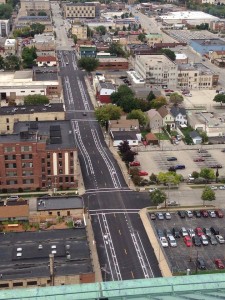
A view of the buffered lanes from the Rockwell Clock Tower, courtesy Bublr Bikes insider Barry Mainwood.
I’m glad to hear the city considered using protected bike lanes and had a logical reason for not doing so. The city deserves kudos for upping their game on 2nd Street, but I wouldn’t be doing my job if I didn’t advocate for more and push the envelope a little. Given the proactive stance Milwaukee DPW is taking, I have high hopes we will see new protected lanes soon.
My vote is for either Michigan Avenue (pull the on-street parking on one side at least) from 6th St. to Lincoln Memorial Drive, Kibourn from Water to Prospect, or possibly Van Buren from Brady to Kilbourn. I think Van Buren could be put on a similar road diet like S. 2nd Street, to provide the extra room that protected bike lanes need.
Get out there and enjoy the new ride on 2nd and let me know what you think. Do you feel better with the buffer?
This story was originally published by the Bicycle Federation of Wisconsin.
Bike Czar
-
Join a Bike Ride Under the Polish Moon
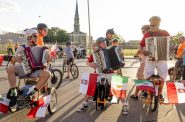 Jun 1st, 2018 by Dave Schlabowske
Jun 1st, 2018 by Dave Schlabowske
-
9 Reasons to Join National Bike Challenge
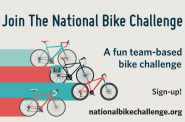 May 4th, 2018 by Dave Schlabowske
May 4th, 2018 by Dave Schlabowske
-
Biking Through the Mindoro Cut
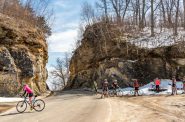 Apr 27th, 2018 by Dave Schlabowske
Apr 27th, 2018 by Dave Schlabowske


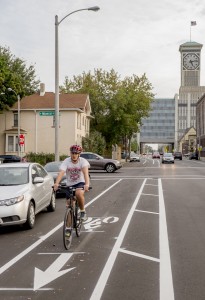
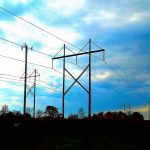

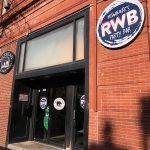

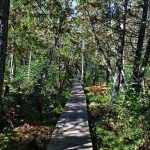















All good suggestions for potential protected lanes. Van Buren makes particular sense given that the road is unnecessarily wide (my anecdotal take after years of use by car), and would be an extension of the heavily traveled bike lanes along N Holton.
Michigan Ave also seems like a great choice. It could serve not only as a prominent biking corridor east to the lake, but may also spur a re-thinking of how Michigan Ave develops as an urban corridor. We gave away it’s vitality to structured parking years ago. Perhaps it’s time to recognize that we should not throw away entire downtown streets just to store cars. With the new Couture and 833 Michigan projects underway or in planning, we have a new gateway developing. That’s a gateway in two directions — both to the lake and to the city.
A nice step, but the impression I get from Bennet’s statement is that protected lanes aren’t going to happen, period, due to “specialized maintenance requirements”. Is there anything unique maintenance-wise about this piece of road?
I live at the northern edge of Walker’s Point and any time I head south, I always take 2nd. The new lanes are fantastic, both for bikers and drivers. Better visibility, clear demarcation of lanes, it’s great for providing space for bikers to pass other bikers and I think everyone can appreciate a little extra buffer between cars and bikes wherever possible. This is especially noticeable once you get south of Greenfield as it hasn’t been resurfaced yet. At that point, it’s quite difficult to tell where any of the lanes are, and even how many of them there are supposed to be.
Rory, I don’t think that is the case. I have talked to Kristin and the City Engineer and know they are interested. Kilbourn has already been discussed as it operates way under capacity now. In our world of ever diminishing shared revenue from the state and the anti-tax/fee politics of today, maintenance is always an issue with special things no matter what they are. Minneapolis, Chicago and NYC have all managed winter maintenance without any trouble, but not without some additional costs. As with anything, it comes down to priorities and a willingness to put our money where our mouth is. If we as a city want protected bike lanes, we should agree to pay to maintain them. It would be nice if our political leaders in Washington and Madison would follow that rule of thumb for all our transportation needs, clearly they don’t, but as a municipality, our leaders have a stronger sense of living within a balanced budget.
Chris,
Yeah, Michigan is a bike route in name only. It should really be labeled a parking route. Virtually the only properties on the street between 6th and LMD are parking lots or parking structures. I see no reason why we need on-street parking on that segment of Michigan.
Dave, maybe you know the answer to this: is the concern about specialized maintenance primarily snow removal? I.e. they can’t use the normal trucks and plows and alternative techniques would be an ongoing expense.
I assume bollard installation is a one-time cost and relatively inexpensive.
I would like to make a comment on the poor condition of many roads designated as ‘bike routes’ The potholes, manholes and gaps are terrible.
Also, I do not feel safe with these bike lanes. The drivers in Milwaukee have no respect for bikers. They open the doors without looking if there is someone biking next to the car. I have almost been killed because of this.
Every year has become more and more dangerous to bike in the city streets. I take the bike paths as much as I can.
I hope someone does something to bring more awareness to these issues
Hey Rory, protected lanes are cleared of snow by the same equipment municipalities use for other narrower areas like sidewalks on bridges, crosswalks, trails, etc. The typical options are pick-up trucks with plows or specialized vehicles like skid steer or in Milwaukee, the orange articulated bombadiers. Most municipalities have such equipment, the bigger problem resource-wise is operators. The City of Milwaukee and most midwest municipalities, are very frugal about winter maintenance and use other DPW employees like sanitation workers to clear snow. The ever decreasing number of public workers has made snow operations a triage system where they only have enough people to do the mains first, then the districts, then the bridge walks, and finally walkways, trails, etc. Madison is about the only municipality in the midwest that I am aware of that maintains their bike paths at the same priority as their mains or arterial streets. That means either Milwaukee would have to direct more staff to the protected lanes earlier, or people on bikes would have to ride outside the protected lanes until they were cleared of snow. Again, this is a question of prioritizing resources. It is also a chicken and egg problem. We could argue that compared to Madison, significantly fewer people bicycle in the winter, so lets not prioritize the protected lanes and paths. You could also argue that one of the reasons fewer people ride in Milwaukee in the winter is they can’t use the facilities for several days to a week after most snow storms.
Patricia,
I think the City of Milwaukee has been making strides each year to get our local roads back up to snuff. Mayor Norquist was the one who refused to increase local spending on street maintenance after Tommy Thompson cut shared revenue. Norquist’s idea was voters would rebel if their roads fell apart and vote Thompson out of office and the next governor would restore shared revenue to previous levels. As we all know, none of that ever happened, so when Barrett took office, the roads were literally falling apart. Since taking office, Barrett had doubled the amount of money spent on local roads and we were catching up to where they should be, but very hard winters have set us back a bit recently. I encourage you to use the new City App to report pot holes or other street maintenance needs. It works super well and it is neat to see a problem on your commute that you reported fixed a week or two later. You feel like you helped your city out!
I cannot argue with your statement that you don’t feel safe in regular bike lanes. Many people don’t feel safe riding bicycles on busy roads with regular bike lanes, hence the development of green lanes and protected lanes. If it helps at all, I will argue that it is actually getting safer every year to ride a bicycle in Milwaukee specifically and in Wisconsin overall. Statistics show more people riding and an ever decreasing crash rate. From a fatal crash standpoint, Milwaukee is one of the safest places to ride in the state. Despite the huge number of people riding, it is statically very rare that anyone is killed in a crash with a car in Milwaukee.
Statistics are one thing and feelings are another. When it comes to what gets people riding or keeps people from riding, feeling uncomfortable or unsafe is more important than statistics. If you don’t like riding on busy streets, none of my statistics are going to change your mind. One thing that does sometimes encourage people to ride more though is taking an adult bike safety class, like out Savvy City Cycling classes. We have those specifically for women too. Contact Jessica Binder in our Milwaukee office if you are interested. Otherwise, ride when you want, where you want and be an advocate if you think something like protected lanes will get you riding more.
Thanks for reading, writing and riding (as little or much as you want).
I’ve been riding the new lanes on S. 2nd St. to work out at the airport and I’m really impressed with the new stretch.
That said, I have a few serious issues with the way the city has been going about bike infrastructure. Firstly, there doesn’t seem to be any emphasis put on maintenance of existing lanes, just on increasing the number of lane miles. When we repaint lanes through potholes or on roads so poorly paved that the line painter can’t paint a straight line and don’t spend money on signs for all bike lanes, it sends the message that the city doesn’t take cycling seriously. The same for when we put in lanes that all end at the edge of downtown or whenever there’s a traffic conflict. Also, there seems to be a pretty consistent trend to not bother with new bike infrastructure projects beyond very basic lanes that aren’t in white or gentrifying neighborhoods. Maybe that’s a little harsh, but it seems pretty blatant when more or less all of the new infrastructure projects and all of the “high impact” repaving is in neighborhoods along the lake.
Sam, the painting of bike lanes over pot holes is the result of limited budgets. Perhaps Kristin Bennett can clarify this, but the City has one long-line paint truck and one operator for it. That truck moves around in the most economically efficient manner, from one part of the City to another. I don’t believe pot hole crews are make aware of the route ahead of time to patch holes before the paint truck goes in. That might be a good idea to advocate for. I have to disagree about the equity issue with bike lanes. I’m not sure where you ride, but I ride through the Central City and the North Side frequently and there are bike lanes almost everywhere they will fit in Milwaukee, many in low-income neighborhoods. Center Street, end to end; North Ave, nearly end to end, Lincoln, Greenfield, Hopkins, N 12th Street, Vliet, etc.
Do you have a specific street needing bike lanes in a specific neighborhood that you are thinking about? Maybe you have a specific issue you are thinking about.
Thanks to everyone involved in encouraging and developing buffered bike lanes. I live on the East Side, and I bike nearly every day in the area. Today’s route was Jefferson Street south to the I-94 overpasses, then Michigan Street, working my way to the Post Office, then further south on 2nd, then Water Street, and eventually over to Erie Street, and then turning back north onto Lake State Park, and eventually onto the lakefront bike paths, before turning south onto the Lincoln Memorial Drive hill past the Art Center, then west on Mason, and north toward home on Milwaukee Street.
All of the above a very scenic ride, some of it on conventional bike lanes. I would love to see more buffered bike lanes, realizing that some streets are not wide enough to accommodate them, but hoping as many as possible could be developed. Thanks also to the developers and installers of the many newly added smooth ride strips on the city’s bridge grates.
@Dave: Thanks for the info about the line painter. Some sort of communication between them and the pothole crew would be great. It seems like a waste of paint to not fix the holes first. I think you misunderstood what I meant with the equity issue. Milwaukee at this point has tons of bike lanes, but if you actually went through them and took out all of the lanes that aren’t useable or are difficult to use due to pavement issues (stretches of Greenfield, Center, 12th, most of Vliet and Lincoln, much of Highland and Walnut, stretches of Holton, etc fit this description), all of the lanes that don’t have good intersection treatment, the lanes that just were painted in the wrong spot accidentally (stretches of Vliet and Center), and the lanes that are or feel particularly unsafe due to gaps in the infrastructure at dangerous intersections or because no one checked to see if the lane would just be used as a passing lane for cars (Vliet and 12th come to mind here), most of the good, useable cycling infrastructure in this city seems to be in primarily white or gentrifying neighborhoods along the lake. That might just be a coincidence, but it would be really nice to see the city focus on a few really high-quality projects in different areas of the city instead of just painting more bike lanes.